Listed 12 most monstrous practices that our ancestors had done in the past
- 24 extremely interesting facts you may not know yet
- 11 most common misunderstandings that billions of people around the world still believe
- 8 sculptural masterpieces that contain little-known secrets
If you think our ancestors had less eccentricity than we do now, you might be mistaken, pay attention to their fashion style and traditional customs. You will definitely change your opinion immediately.
Whatever the time, customary customs are often a beauty and an important mark of that period. However, in the past, there were many strange practices that are no longer available due to the oddity and somewhat unsuitable for them.
We have collected some of the habits that our ancestors consider normal but there are some things that we do not dare to do today.We invite you to take a look at the 12 most bizarre practices our ancestors ever made in the past!
1. Sleep 2 stages of the Middle Ages
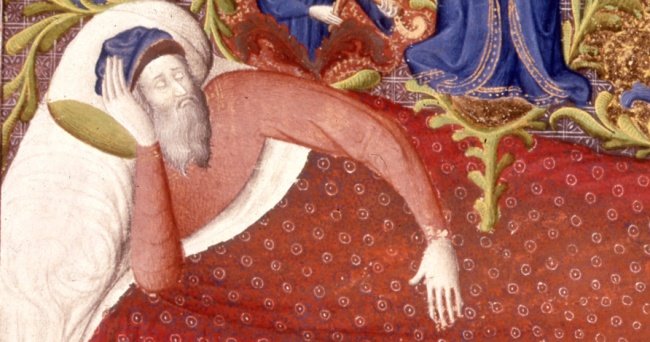 Listed 12 most monstrous practices that our ancestors had done in the past Picture 1 © The British Library
Listed 12 most monstrous practices that our ancestors had done in the past Picture 1 © The British Library
Usually, we often go to bed at night and wake up early in the morning, right? However, those who lived in Europe in the Middle Ages did not follow the sleep pattern that seemed impossible to change. They will start their first sleep when the Sun goes down and wakes up at midnight. After that, they will spend about 2-3 hours to live or chat with their friends and relatives before starting the second sleep and wake up when it is morning.
Scientists think that the Medieval people divided their sleep into two stages because they believe that the period between the two periods of sleep is the most refreshing spirit. Therefore, they will take advantage of that time to relax with friends and relatives.
See also: 11 mysteries happen in the body when we sleep
2. Alarm clock 'live'
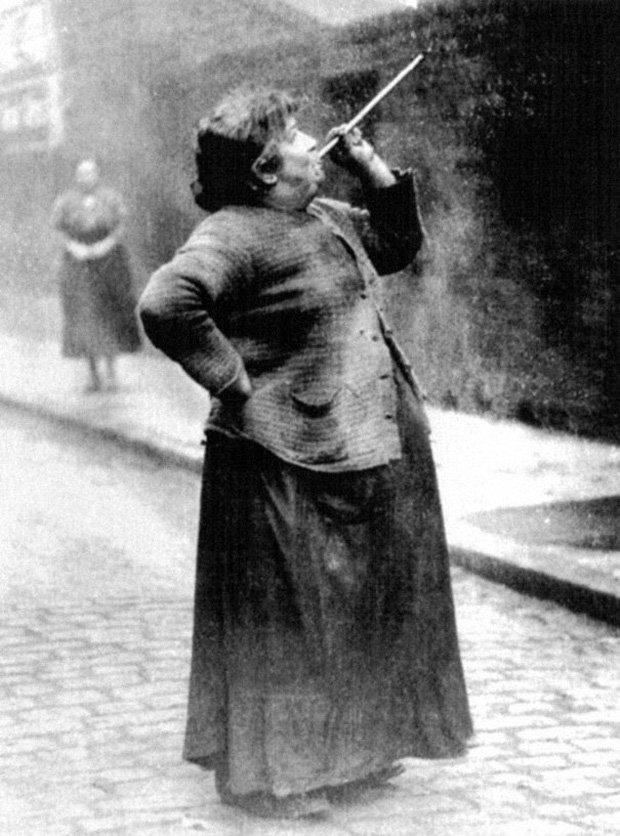 Listed 12 most monstrous practices that our ancestors had done in the past Picture 2
Listed 12 most monstrous practices that our ancestors had done in the past Picture 2
In the past, there will be people who take the job of waking people up every morning . Instead of setting an alarm as we are today, people who lived in the mid-eighteenth century to the mid-twentieth century ( the 1950s ) had a different way. At that time, there will be people who do the job to wake up the people in the village to wake up on time.
The work of this " wake-up clock " includes going to the door of every house early in the morning and using small trumpets to wake everyone up. Moreover, those who do this work are supposed to be awake until the task is completed and return home and start their sleep.
3. Boys also wear skirts like girls
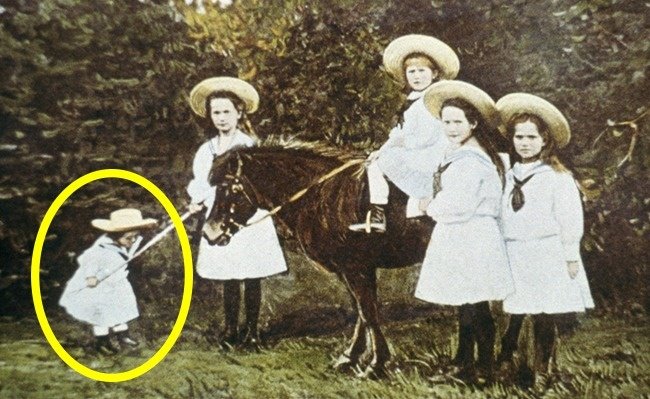 Listed 12 most monstrous practices that our ancestors had done in the past Picture 3 © EAST NEWS
Listed 12 most monstrous practices that our ancestors had done in the past Picture 3 © EAST NEWS
From the sixteenth century until the 1920s, it was normal for boys in the West to wear skirts . Boys from 4 to 8 years old at that time would wear skirts instead of wearing pants like today. They will wear pants when older and mature.
The main reason for this is because the economy at that time was still quite difficult, so it would be more costly to sew pants . Therefore, boys will wear dresses like girls to save costs for the family. Gradually, this dress became more popular because even the boys from rich noble families wore the same thing.
That tradition is no exception to royal families. The picture above is Alexei , son of Tsar Nicholas II, in a dress similar to his sister's dresses.
4. Chopines shoes
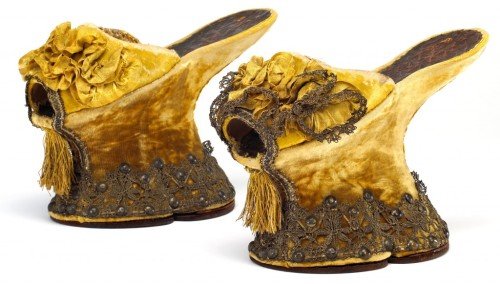 Listed 12 most monstrous practices that our ancestors had done in the past Picture 4
Listed 12 most monstrous practices that our ancestors had done in the past Picture 4
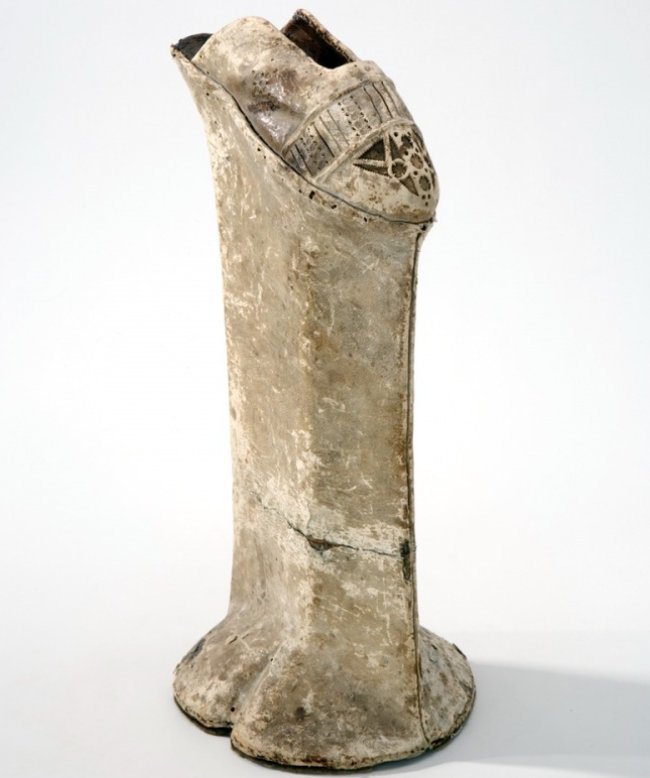 Listed 12 most monstrous practices that our ancestors had done in the past Picture 5 © Wikipedia Commons
Listed 12 most monstrous practices that our ancestors had done in the past Picture 5 © Wikipedia Commons
Chopines shoes, also known as zoccoli or pianelle , are one of the oldest high-heeled shoes and have soles of up to 50cm. Not surprisingly, those who carry them require the help of their servants to avoid being a fashion victim. Chopines shoes are quite dangerous because of heavy soles, some couples have a "height" of up to . 70cm, making it difficult for ladies to move.
Admittedly, Chopines shoes are worn not only by style but also for the purpose of not staining the wearer's clothes when traveling on the street.
5. Extract blood to treat diseases
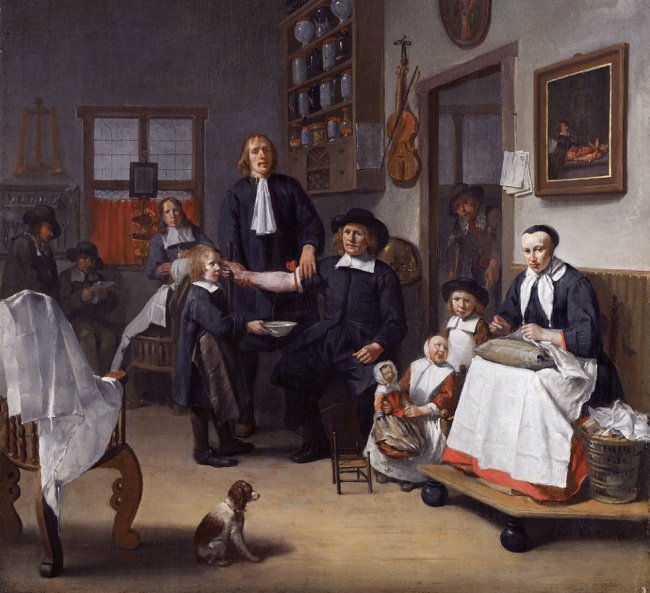 Listed 12 most monstrous practices that our ancestors had done in the past Picture 6 © Wikipedia Commons
Listed 12 most monstrous practices that our ancestors had done in the past Picture 6 © Wikipedia Commons
Until the beginning of the twentieth century, many countries in Europe still believed that just by extracting blood from a patient's body, the pathogen also followed the body. This obsolete healing method has existed for over 2,000 years and is applied to many different diseases.
However, medical development has helped people to find more effective treatments to replace. Besides, people are also aware of the dangers of this treatment because they not only cure many diseases but also make people sick with anemia .
6. Limit all bathing
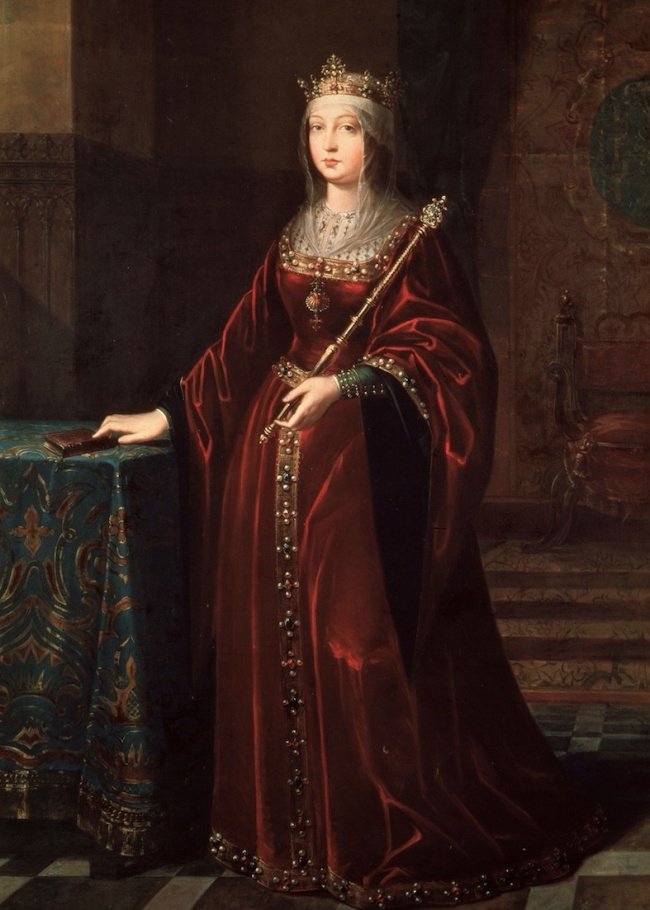 Listed 12 most monstrous practices that our ancestors had done in the past Picture 7 © East News
Listed 12 most monstrous practices that our ancestors had done in the past Picture 7 © East News
In the Middle Ages, people still believed that water brought about human pathogens, and lice were the " jewels of God ". Therefore, people limit all the bathing and personal hygiene .
Even the rulers of the country believe in this hypothesis. It is known that the queen of the Castile kingdom is extremely proud of her body because she only bathed twice in her entire life when she was born and before marriage.
According to one witness, as soon as a knight made a comment about the dirt in her hands and nails, the queen did not hesitate to respond immediately: ' Oh, if only you could see your feet mine '.
7. Take a picture with the deceased
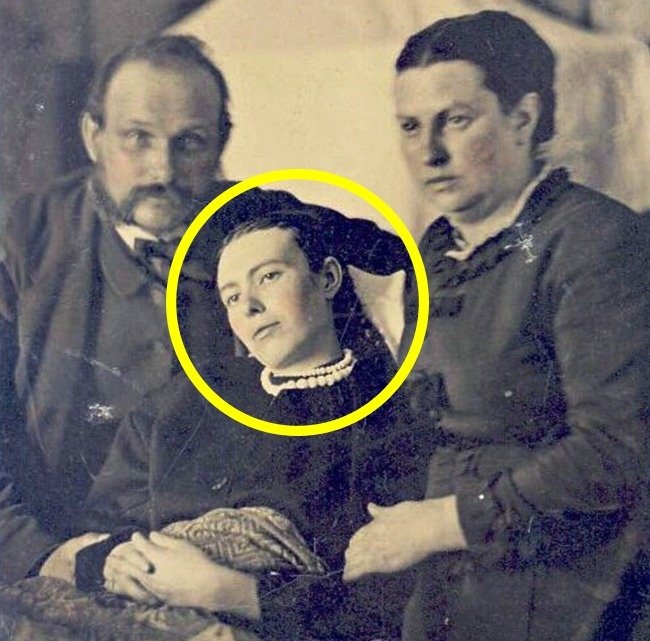 Listed 12 most monstrous practices that our ancestors had done in the past Picture 8 © Wikipedia Commons
Listed 12 most monstrous practices that our ancestors had done in the past Picture 8 © Wikipedia Commons
When a family member dies, the rest of them are deeply sad and miss. In the nineteenth century, people in several European and American countries chose to take pictures with the lost people to try to keep the final images of them .
The deceased will be dressed and sitting in the natural posture as when he was alive. Not only that, people also drew a pair of eyes wide open on their closed eyelids to look like they had never gone. Later, the relatives will style with the corpse and retain that image as a precious memorabilia. Currently, this bizarre practice no longer exists.
See more: Discover breakfast of 23 countries around the world
8. Applying cosmetics made from radioactive substances
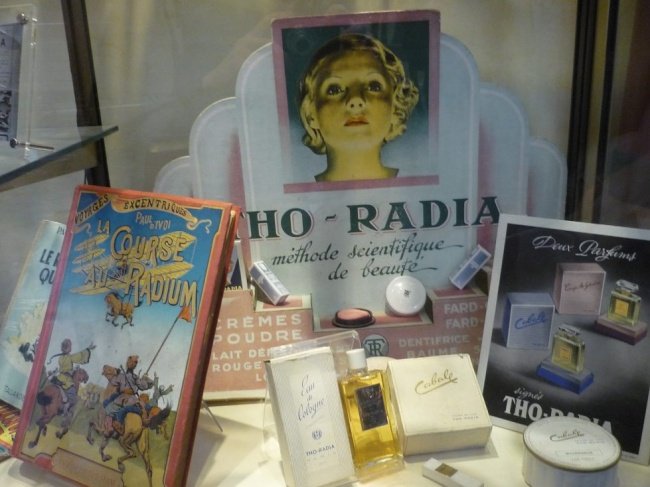 Listed 12 most monstrous practices that our ancestors had done in the past Picture 9 © Wikipedia Commons
Listed 12 most monstrous practices that our ancestors had done in the past Picture 9 © Wikipedia Commons
In the early years of the twentieth century when people found new types of active ingredients, they were applied in many fields. People at that time could easily buy radioactive food or water. Not only that, cosmetic manufacturers are also quick to add substances like radium or thorium to their products to attract users.
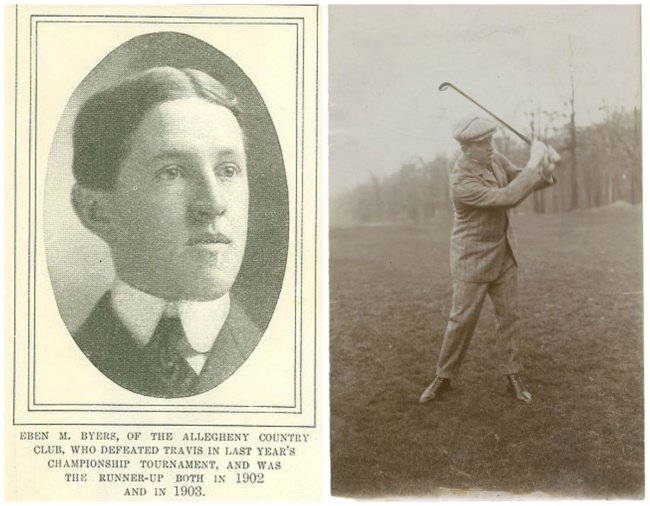 Listed 12 most monstrous practices that our ancestors had done in the past Picture 10 © Wikipedia Commons
Listed 12 most monstrous practices that our ancestors had done in the past Picture 10 © Wikipedia Commons
However, there have been many deaths after too much exposure to these radioactive substances. After that, people realized their dangerous effects and banned the indiscriminate use of radioactive substances in their daily lives.
9. Using heroin to treat cough
 Listed 12 most monstrous practices that our ancestors had done in the past Picture 11 © Wikipedia Commons © AP / FOTOLINK / East News
Listed 12 most monstrous practices that our ancestors had done in the past Picture 11 © Wikipedia Commons © AP / FOTOLINK / East News
Heroin is a dangerous addictive substance currently banned worldwide. However, about 100 years ago, this substance was widely used as a cough medicine to replace morphine. Even then, heroin is recommended for children.
By 1924, scientists discovered that heroin would be converted into morphine in the liver and toxic to the body . Since then, this substance has been banned in treating diseases. But it was not until 1971, Germany strictly prohibited the use of this substance to produce drugs.
10. Smoking on the plane
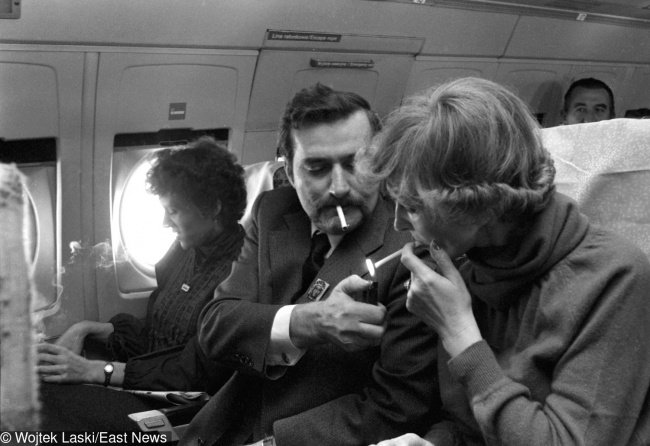 Listed 12 most monstrous practices that our ancestors had done in the past Picture 12 © EAST NEWS
Listed 12 most monstrous practices that our ancestors had done in the past Picture 12 © EAST NEWS
About 50-60 years ago, tobacco was not considered a bad habit. People do not prohibit this habit even during flights, regardless of the presence of others. Today, smoking on aircraft has been banned but in some countries ( like Iran ) the ban has not been implemented.
11. Sea bath
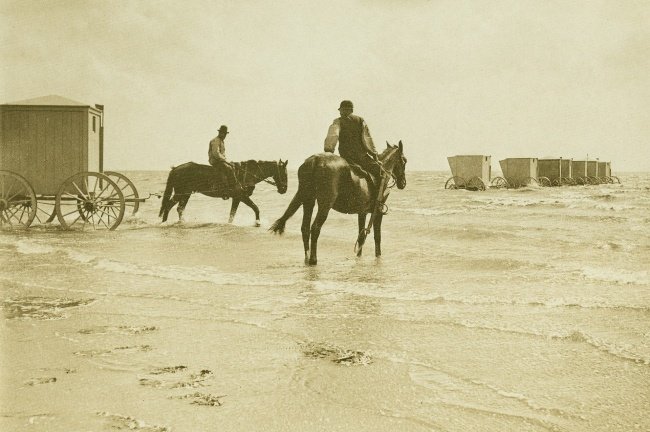 Listed 12 most monstrous practices that our ancestors had done in the past Picture 13 © Wikipedia Commons
Listed 12 most monstrous practices that our ancestors had done in the past Picture 13 © Wikipedia Commons
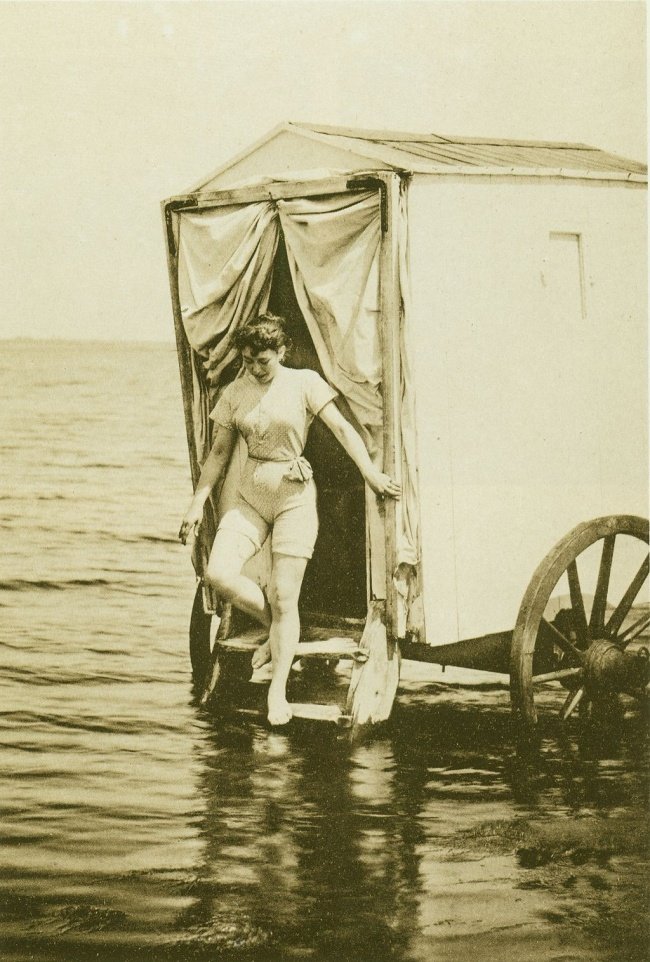 Listed 12 most monstrous practices that our ancestors had done in the past Picture 14 © Wikipedia Commons
Listed 12 most monstrous practices that our ancestors had done in the past Picture 14 © Wikipedia Commons
Swimming is always a favorite for many people. However, the old rituals were quite strict in the freedom of a person to soak in the open sea. Therefore, it was invented a special device called a bathing machine . This device is used quite popular in the nineteenth century for both men and women.
In fact, this bathing machine is actually just a car covered by curtain cloth . When you want to swim, users will pull this device to the middle of the sea and take a dip in it. Thanks to that, the people around will not be able to see their bodies when bathing. In addition, women's swimming machines will also be located away from men's machines.
12. Take stone as a toilet paper
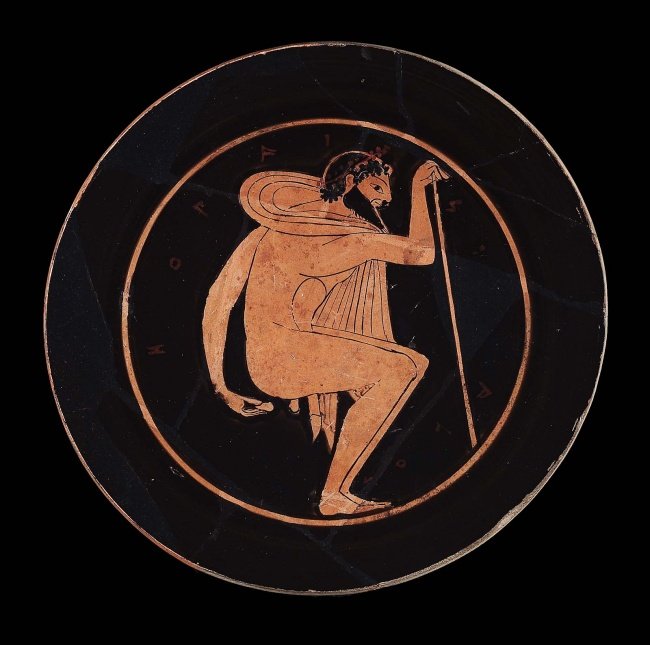 Listed 12 most monstrous practices that our ancestors had done in the past Picture 15 © Museum of Fine Arts Boston
Listed 12 most monstrous practices that our ancestors had done in the past Picture 15 © Museum of Fine Arts Boston
Before inventing toilet paper, the old people had to make use of many other things to clean after going to the toilet. These include leaves, corn stalks, coconut shells, wool or even clothes ( which they think are capable of doing that ). However, the ancient Greeks will make you feel much more surprised to know the material they use for this purpose is stone, gravel or ceramic pieces.
They also use broken pieces of porcelain to clean the body after going to the toilet. Currently, there are many archaeological monuments still retaining this strange habit.
See also: Science is still finding the mystery behind "trypophobia"
Having fun!
You should read it
- Top 19 incredible facts not everyone knows
- Strange habits of gamers when playing shooters
- 11 strange rules just found in Japan you may not know!
- 12 scary fashion trends ever popular in history
- 13 odd things can only happen in China
- Google Maps detects 8 strange bases of aliens?
- The most difficult 'death' of the medieval princes
- Why is it strange to open a new electronics box?
- UFOs found in Russia also contain 'bodies of aliens'?
- Many people have heard 'strange sounds' when looking at this animated picture, what about you?
- 10 mysterious and strange places appear Google Earth that surprised people
- 10 strange things happen to the body when you fly
May be interested

Mysterious codes challenge the world

8 world famous abandoned places make you shiver

15 extremely interesting facts about the human body you may not know

The sky of blood, the mysterious natural phenomenon challenges the intelligence of modern scientists

9 most mysterious pictures of all time without a solution

The mystery of no solution, 16 feet of people drifting to the coast for 10 years scared many people






 10 animals with monstrous appearance
10 animals with monstrous appearance .NET Best Practices in 2023
.NET Best Practices in 2023 Artificial intelligence discovers the unprecedented human ancestors
Artificial intelligence discovers the unprecedented human ancestors Top 5 monstrous but extremely attractive games
Top 5 monstrous but extremely attractive games You are curious, how the ancestors of today's vegetables are shaped
You are curious, how the ancestors of today's vegetables are shaped Startling the monstrous creatures with faces from ... hell
Startling the monstrous creatures with faces from ... hell